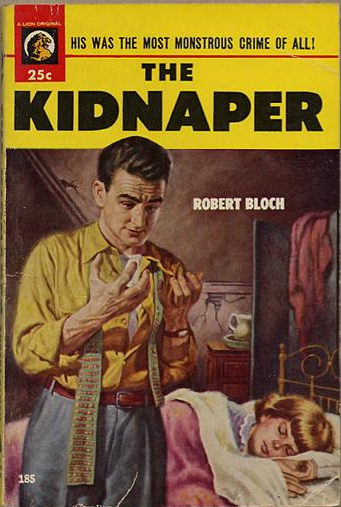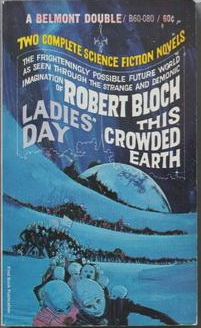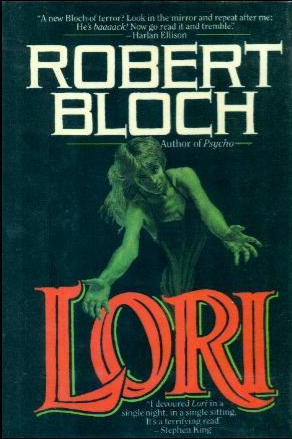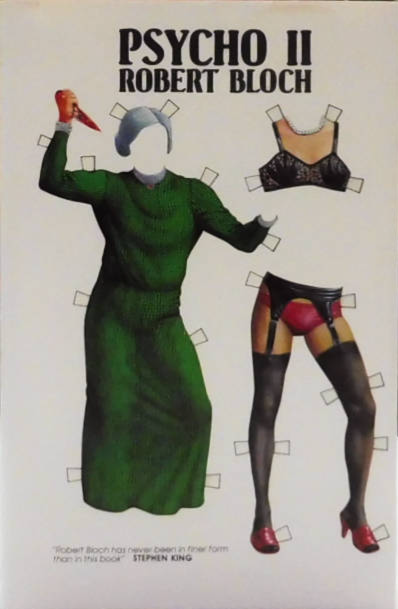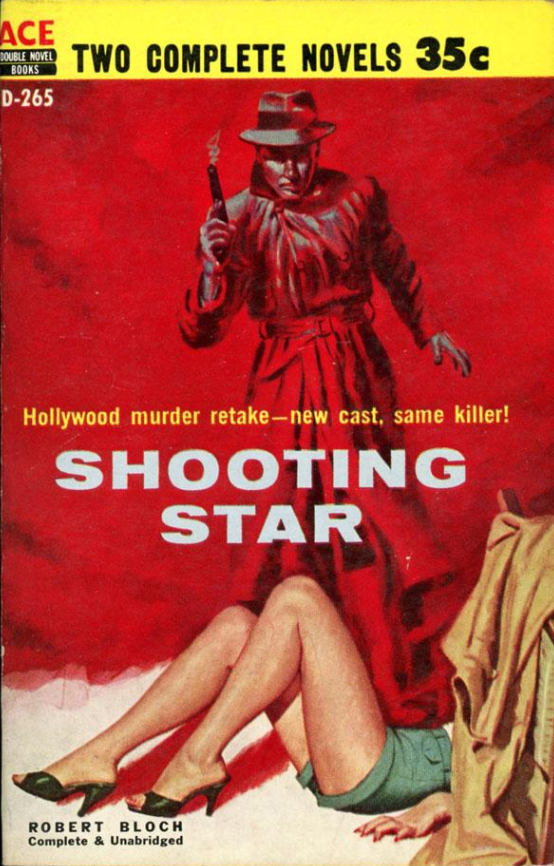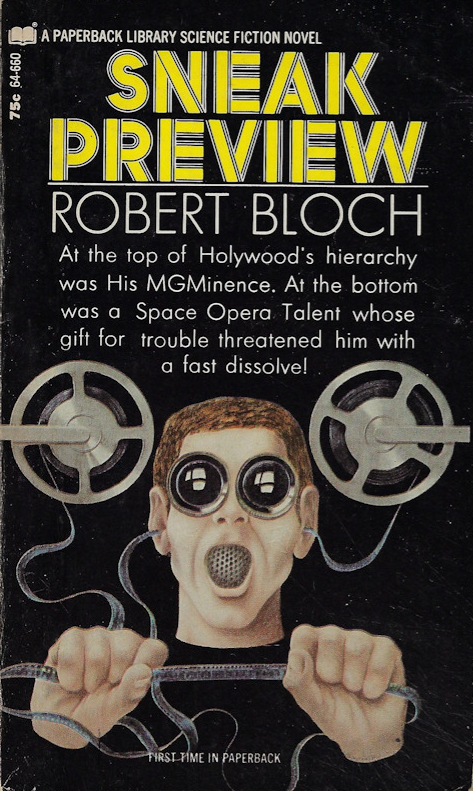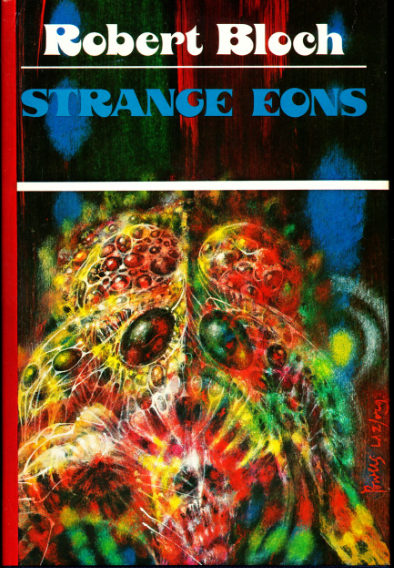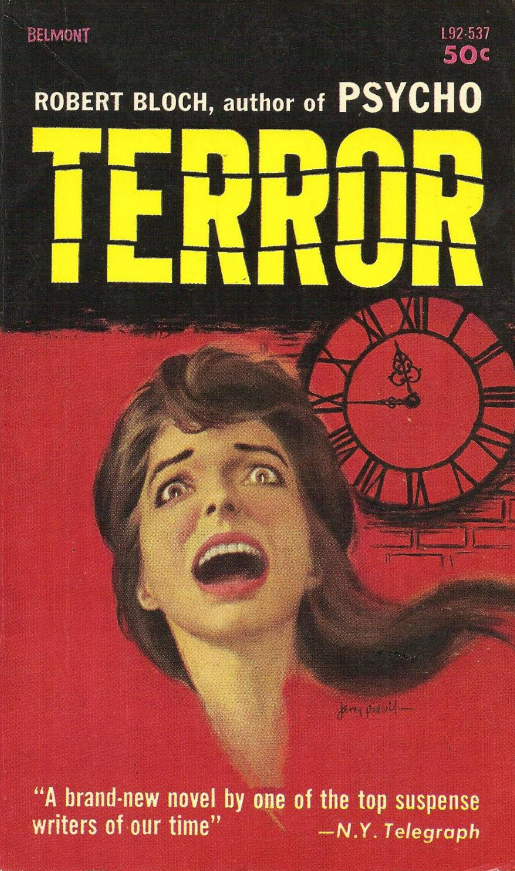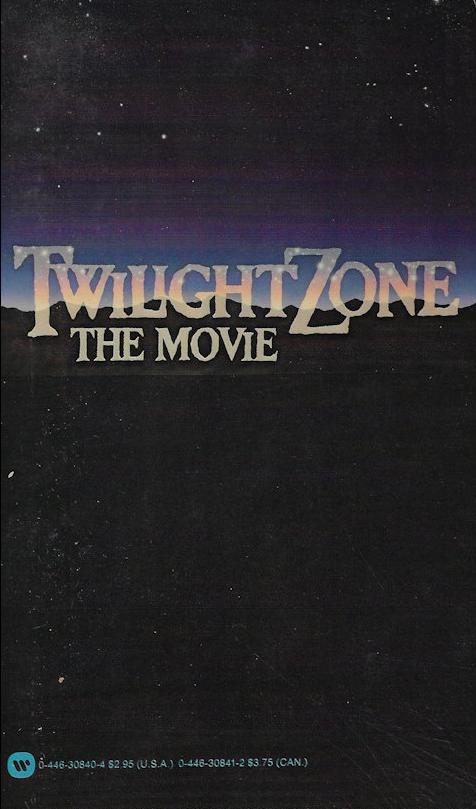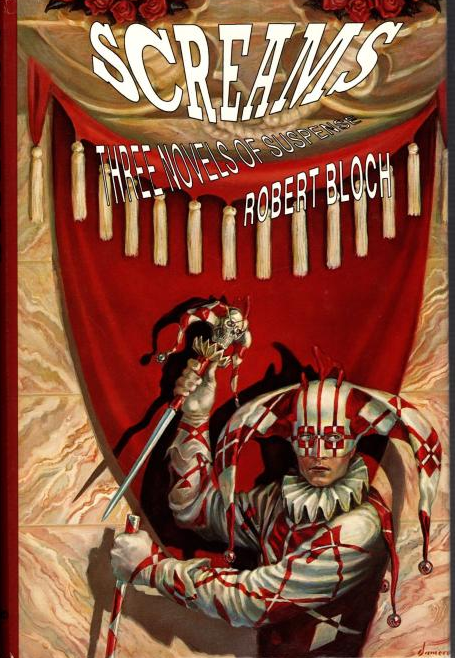Novels
(Hover over/click each cover for more)
(Hover over/click each cover for more)
Unpublished novels
Nobody Else Laughed - with Harold Gauer; 1939.
In the Land of Sky-Blue Ointments - with Harold Gauer; 1938; characters and episodes from this book appear in later Bloch stories, such as "The Travelling Salesman" and "The Strange Island of Dr. Nork." The character of Lefty Feep also appears for the first time here.
Bloch described these efforts as "never intended or submitted for publication."
In the Land of Sky-Blue Ointments - with Harold Gauer; 1938; characters and episodes from this book appear in later Bloch stories, such as "The Travelling Salesman" and "The Strange Island of Dr. Nork." The character of Lefty Feep also appears for the first time here.
Bloch described these efforts as "never intended or submitted for publication."
With his turn in the early 1940s to mining the psychology and inner workings of the human brain for material, Bloch brought a level of realism to his work that was all the more chilling for now hitting close to home—for the monster in the room was no longer the vampire or ghoul of old but could well be the very person standing next to you. Bloch’s first published novel, The Scarf (1947), expanded upon this theme and established his unique take on literary psychological horror—that of telling his story from the first-person perspective of the villain/antagonist. Bloch would use this effective and lauded technique again in subsequent novels The Will to Kill and The Kidnaper (sic), both 1954. It should be noted, that while far from being the first to use the concept of the unreliable narrator in his fiction, Bloch exceled with such, long before the trope became “fashionable” among writers.
In 1959, Simon & Schuster published Bloch’s magnum opus, Psycho. The book met with generally favorable reviews and was an instant hit with readers; its initial hardcover print run sold out quickly. It’s important to note here that the novel was a considerable success on its own before Hitchcock’s cinematic adaptation the following year. That the novel went on to even greater success after the film’s release is undeniable.
Bloch’s post-Psycho novel work consists of nearly 20 books, stretching across the fields of science fiction, fantasy, psychological thrillers, crime/mystery, historical-based horror, screenplay novelizations and more. Of note, he revisited his most famous creation, Norman Bates, in two additional books, Psycho II and Psycho House. With noted science fiction author Andre Norton, he co-authored, The Jekyll Legacy (1990), a sequel to the Robert Louis Stevenson classic. In American Gothic (1974), he fictionalized the horrors of real-life serial killer H. H. Holmes, who brutally murdered a number of people during the 1893 Chicago World's Fair. Lastly, Bloch ended his long association with Jack the Ripper in 1984 with The Night of the Ripper. An acclaimed entry in the Ripper canon, the book is notable for weaving such real-life personages as Sir Arthur Conan Doyle, the Elephant Man, and Oscar Wilde into its storyline.
In 1959, Simon & Schuster published Bloch’s magnum opus, Psycho. The book met with generally favorable reviews and was an instant hit with readers; its initial hardcover print run sold out quickly. It’s important to note here that the novel was a considerable success on its own before Hitchcock’s cinematic adaptation the following year. That the novel went on to even greater success after the film’s release is undeniable.
Bloch’s post-Psycho novel work consists of nearly 20 books, stretching across the fields of science fiction, fantasy, psychological thrillers, crime/mystery, historical-based horror, screenplay novelizations and more. Of note, he revisited his most famous creation, Norman Bates, in two additional books, Psycho II and Psycho House. With noted science fiction author Andre Norton, he co-authored, The Jekyll Legacy (1990), a sequel to the Robert Louis Stevenson classic. In American Gothic (1974), he fictionalized the horrors of real-life serial killer H. H. Holmes, who brutally murdered a number of people during the 1893 Chicago World's Fair. Lastly, Bloch ended his long association with Jack the Ripper in 1984 with The Night of the Ripper. An acclaimed entry in the Ripper canon, the book is notable for weaving such real-life personages as Sir Arthur Conan Doyle, the Elephant Man, and Oscar Wilde into its storyline.






